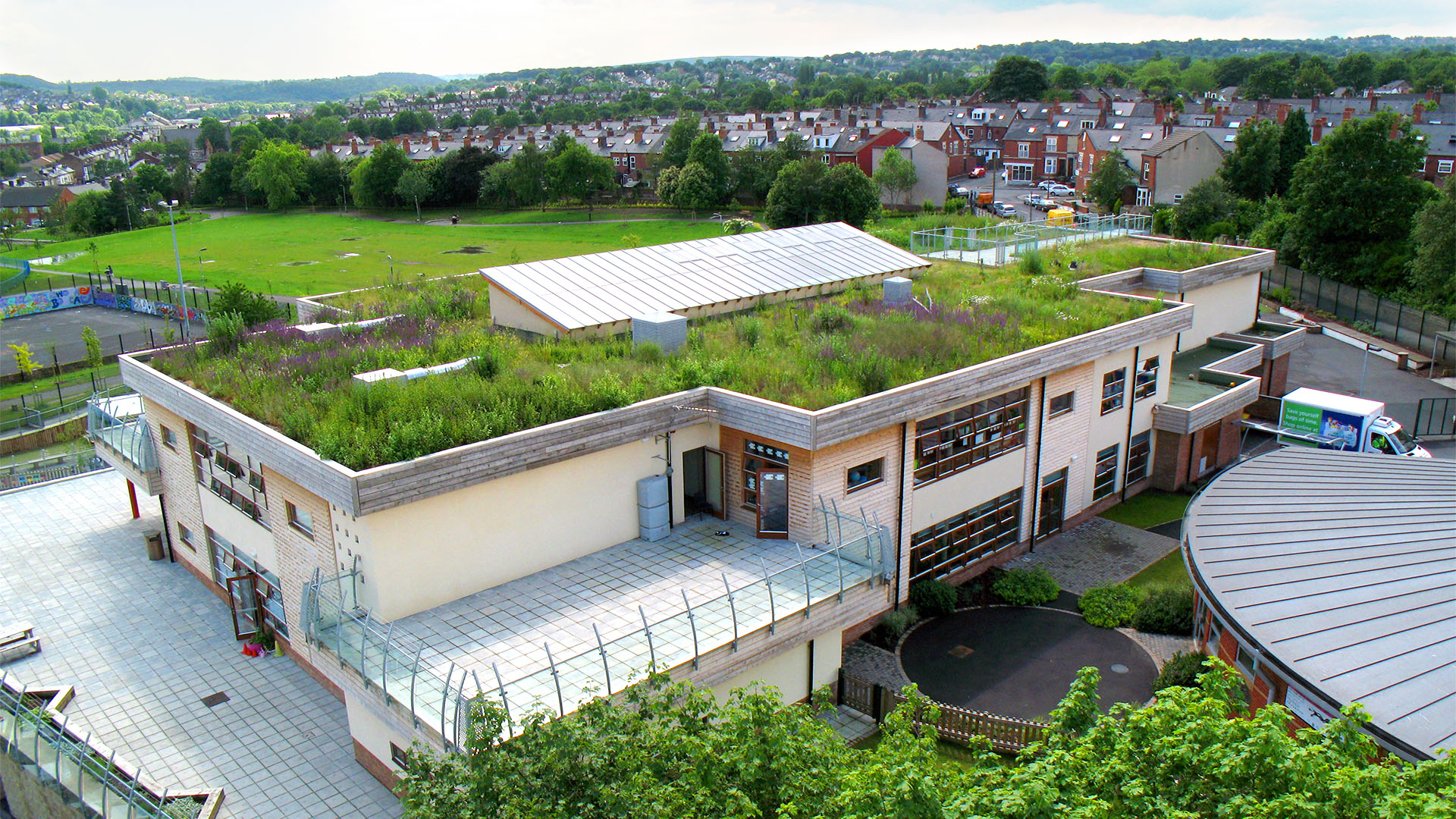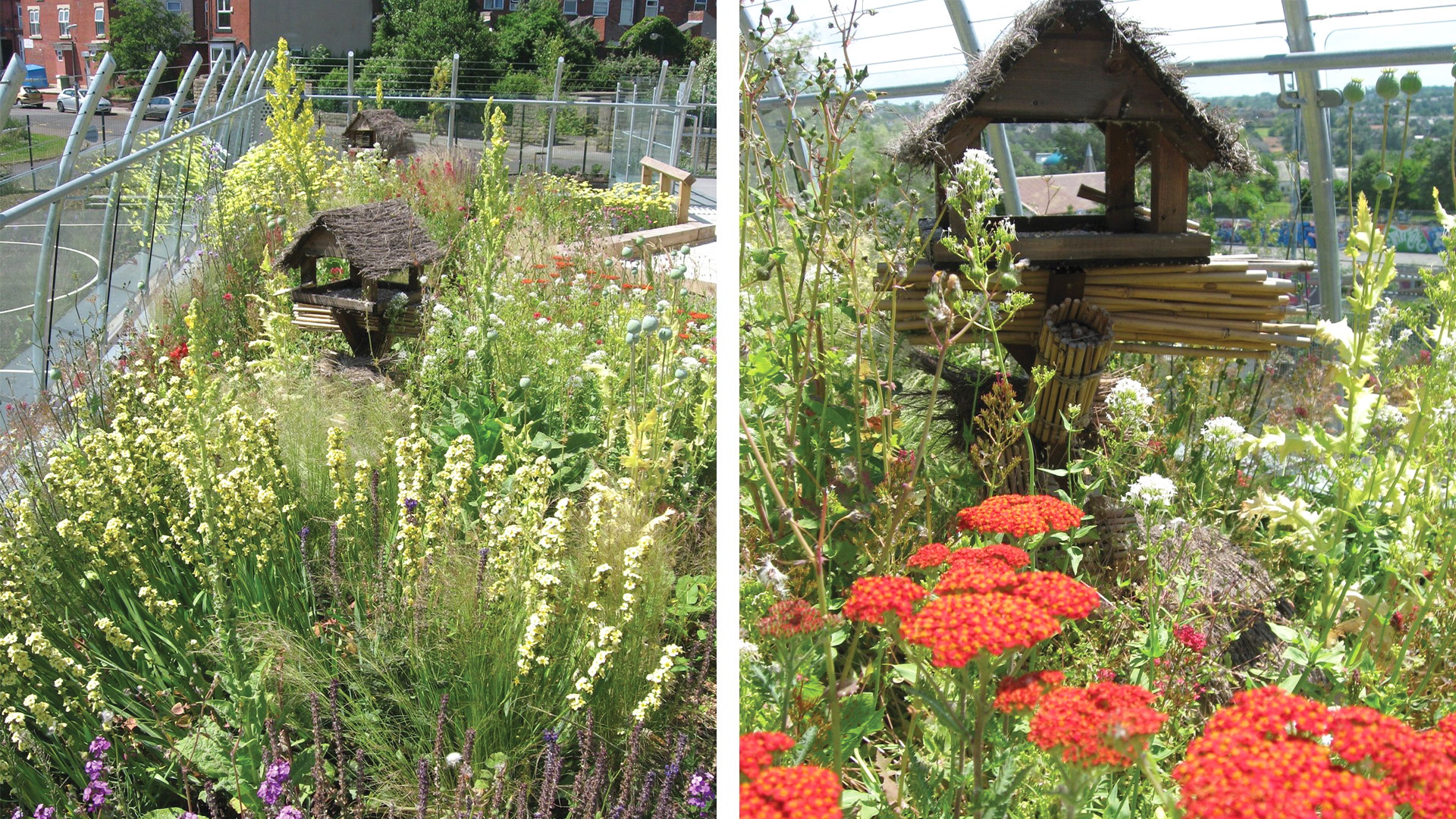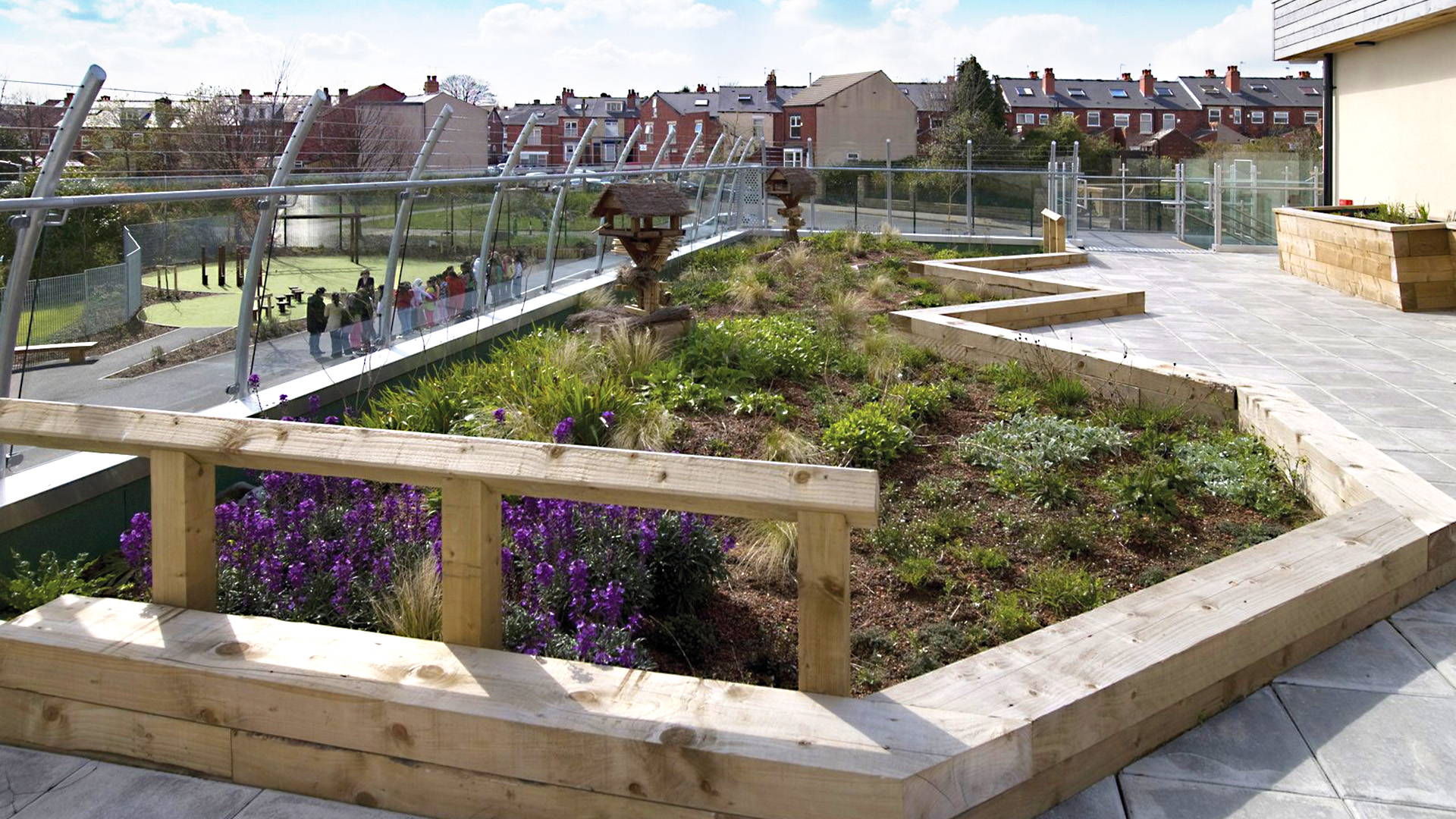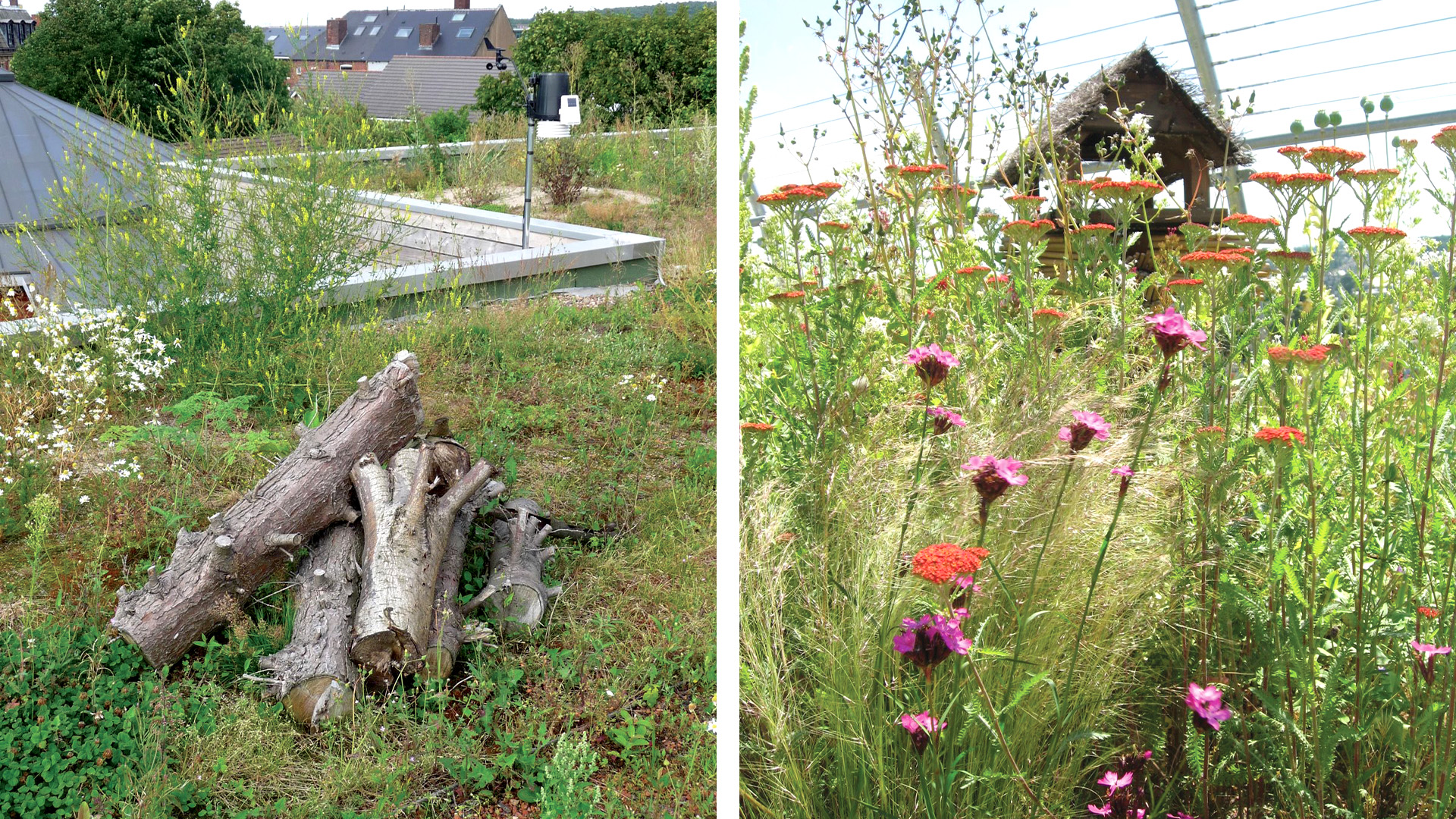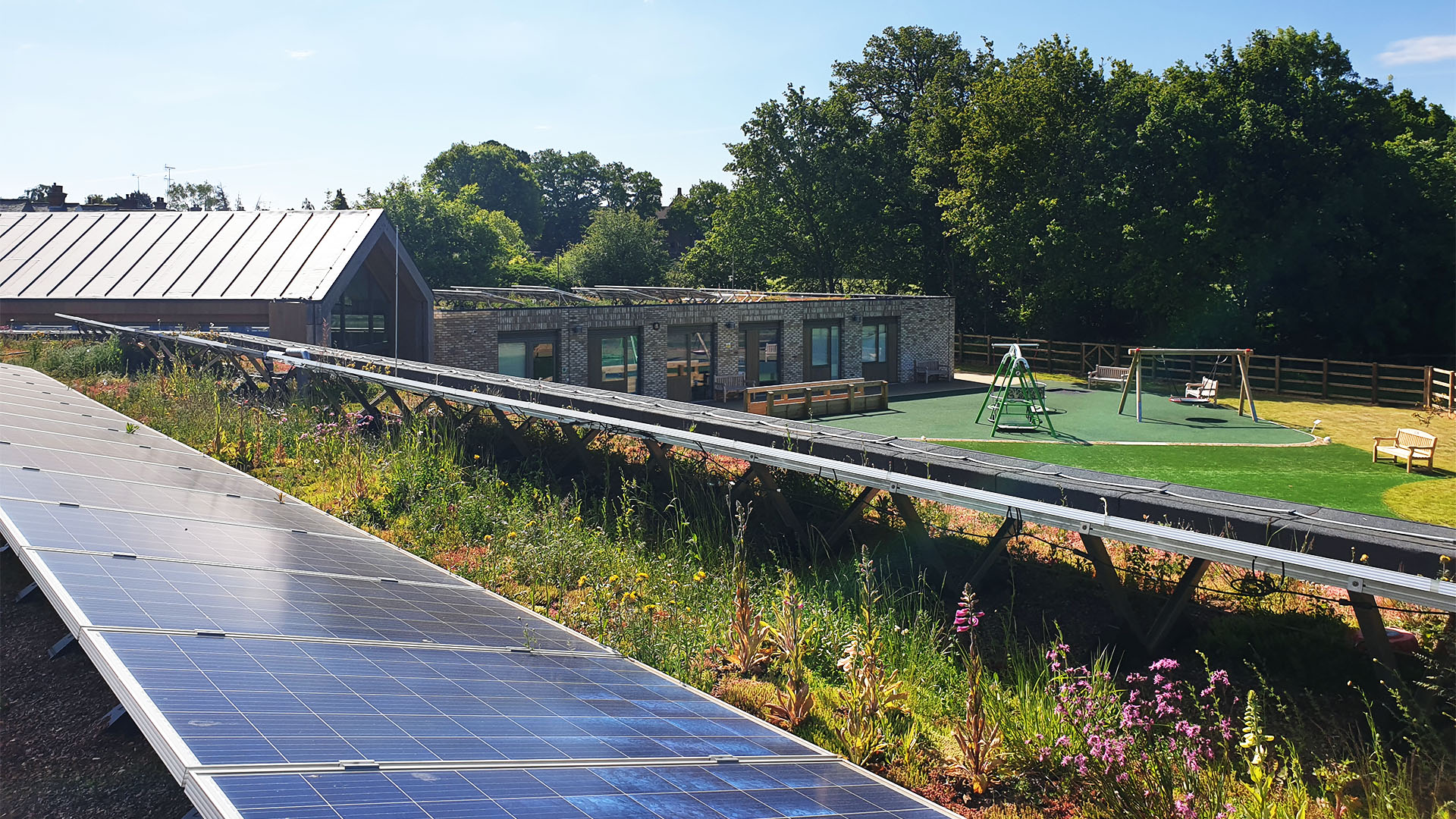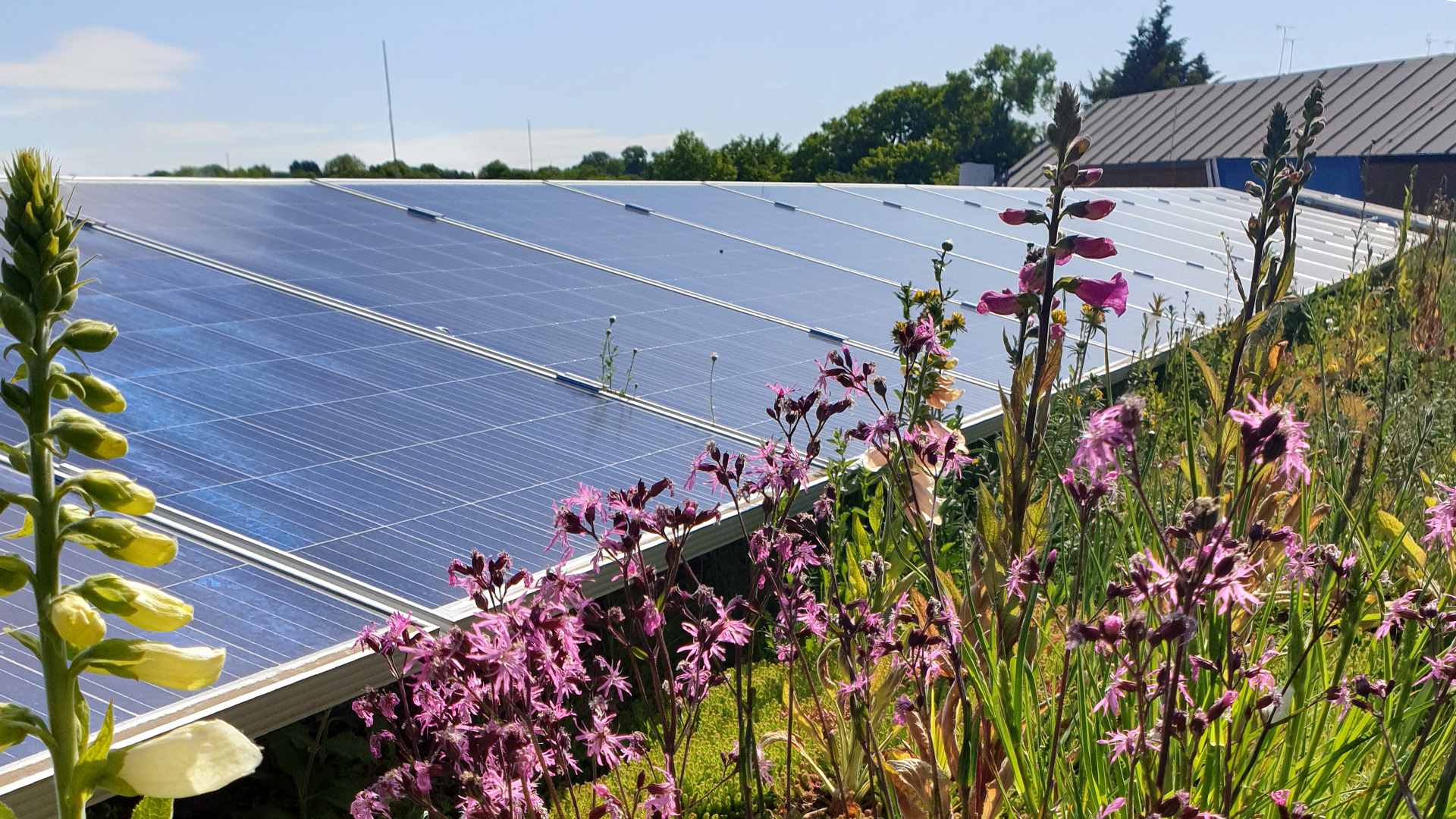In June, media outlets were abuzz with stories of the foxes who unexpectedly took up residence on the rooftop of a £1bn new build office complex that is nearing completion in central London.
Officially for wildlife, the 300m-long garden, built with 40,000 tonnes of soil, and planted with 250 trees, runs the length of the 11-storey building and is another example of a major construction project with a commitment to sustainable planning. What the vulpine tenants have unwittingly demonstrated is that the right ecological environment will attract nature.
As cities grow, balancing new development with ecological preservation is increasingly urgent. Biodiversity net gain (BNG) on roofs has become a key strategy to address habitat loss.
“Green roofs are a real lifeline for biodiversity,” says Chris Roddick, green roofs product manager with roofing experts Bauder. He admits the uninvited foxes case is somewhat different though, as green roofs usually attract invertebrates, butterflies, insects, birds, and bats, because of their elevated locations.
The UK is set to see more of these lifelines. Since early 2024, the UK’s BNG policy requires new schemes to enhance biodiversity by at least 10%. And after playing catch-up to the rest of Europe – and Germany in particular, where one in 10 flat roofs are green – the UK is steadily increasing its green roof area.
While ‘green roofs’ can be an umbrella term that incorporates roof gardens, “not all green roofs will have a roof garden,” says Roddick. In his line of work, ‘gardens’ are spaces shared by people, with deep planting, that are not a natural environment but a cultivated one.
Creating pollinator corridors
Collectively, green roofs can contribute to the creation of pollinator corridors. As butterflies and other pollinators navigate through a city, they cover only short distances while foraging for food. Large gaps between areas of green space, increases the risk of insect communities becoming isolated as they are unable to find their way to pollinate new areas.
“Having even small green rooftop spaces means pollinators can hop from roof to roof, explore, and expand. The UK really struggles with this because our green space is so fragmented,” says Roddick.
With the help of the Green Roof Organisation (GRO), and initiatives like World Green Roof Day (WGRD) on 6 June, and the Living Roof Live Lab research project, showcased at this year’s WGRD, the industry is trying to plug the gaps that lead to such fragmentation.
Bauder was a founding member of GRO in 2008. It was the response to calls for guidance in a growing industry, which led to the publication in 2011 of its Green Roof Code of Best Practice for green roof design, installation and maintenance.
World Green Roof Day 2025
GRO has become an integral part of WGRD, set up in 2020 with the plan to establish a global celebration that highlights the environmental, social, and aesthetic benefits of green roofs – especially in urban areas where green space is limited.
Held every year on 6 June, the 2025 event is focused on education, training a new generation of green roof designers and sharing knowledge through hands-on learning and research.
Roddick adds that WGRD is a chance for the green roof community in any country to share its passion for green roofs, and “to share research and ideas and celebrate the beautiful green roofs which enhance our built environment.”
Another part of this year’s WGRD was showcasing the Living Roof Live Lab at the Open University’s (OU) Walton Hall campus in Milton Keynes.
The two-year research project is a collaboration between the OU and GRO, to which Bauder is a major supporter, donating products used in its trials. It is gathering evidence and data on the benefits of the UK having green roofs, with the findings set to be published in 2028.
Those results will be for the entire industry, says Roddick: “Bauder will benefit in as much as we will take on board the research findings, but those findings will be shared with everyone in the hope that industry-wide best practice improves.”
Upgrading Noah’s Ark
Having supplied the original green roof for Noah's Ark Children’s Hospice in Barnet in 2019, a Bauder team led by regional manager Hayden Davies returned in June to upgrade the roof’s planting range and help with maintenance.
“We approached Noah's Ark to ask was there anything we could do to improve the roof, because again, all green roofs need a bit of TLC from time to time,” says Roddick. With this in mind, he arranged for a team of Bauder representatives located near Barnet to spend a day back on site at the hospice.
"We would like to see BNG and its focus on aftercare becoming part of the green roof story,” says Roddick. “If you can get good aftercare, these roofs will be a great asset to the building they're on and the cities they're in.”
The benefits to having green roofs go beyond BNG. Aesthetics are an obvious one, with insulation another, depending on the type of green roof. An additional potential benefit is sound insulation. “Vegetation is good at absorbing noise,” says Roddick. This is particularly beneficial to schools, hospitals, and theatres.
Blue roofs, often located beneath green roofs, are also part of Bauder’s growing green roof portfolio. Blue roofs mean a lower risk of localised urban flooding and can help keep buildings cooler in the summer months.
Not long after this summer has seen its final sunshine, any foxes inhabiting the central London roof will have to find a new home once the building opens to approximately 7,000 human occupants later this year.
Then the biodiverse life the roof was intended for will take over, adding to the ever-growing number of green roofs spreading flora and fauna throughout the UK’s towns and cities.




